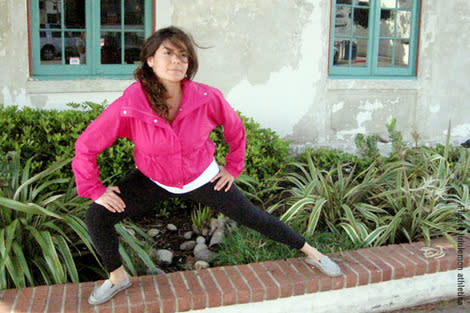Pilates for Muscular Re-Patterning
By: StacyAtZeel
There's no doubt that shaping up after a big fall can be tough. That's one of the reasons why Pilates can be so incredibly useful, says Zeel expert and NYC studio owner Halle Clarke.
When it comes to rehabilitation (whether due to

injury or to years of inactivity), it's not just about getting back to a place of physical fitness; it's equally important for your muscles to relearn certain movements that may have become inhibited over time. Pilates does just that, and can be applied as both an exercise and a neuromuscular re-patterning technique. Halle explains what you need to know.
Compensation patterns. Imagine this. If you hurt your left leg, naturally, you'll start placing more weight on your right leg to compensate for the injured limb. As you begin to heal, you continue to place added pressure on the right leg because your muscles have become accustomed to functioning in a new manner-even if it's a less efficient one. In the end, that added weight can cause a domino effect of discomfort and injuries. Pilates offers a gentle way to prevent or reverse these patterns.
Time heals all wounds. If a muscle becomes severely strained, you may need a few weeks to allow your body to heal, depending on the nature of the injury, before you can really take the muscle through its full range of motion. Yet this rest period can turn into a real balancing act. The longer you wait to start moving again, the more likely it is that your body will begin to create patterns of compensation. Pilates may be gentle enough to reintroduce movement to the muscle without exacerbating the injury.
Muscular re-patterning. When injured or de-conditioned, muscles essentially suffer memory loss, as noted by the example above. Some muscles will begin to contract too quickly, some too slowly, and some not at all. Pilates can re-pattern the muscles. Through this re-education process, it's possible to instruct the muscles when to become active and fire, when to contract, and how to do it.
A friendly reminder. As you now know, without re-patterning, your muscles can develop compensated habits. Ultimately, this causes them to work inefficiently, leading to all sorts of physical aches and ailments. Proper movement doesn't reinstate itself. Rather, your muscles need to be reminded of what it feels like to engage in healthier, more efficient patterns - which Pilates is perfect for. Many pain issues can be resolved by coordinating muscle movement in this manner.
For personalized Pilates instruction and fitness advice, book an appointment with Halle on Zeel.
